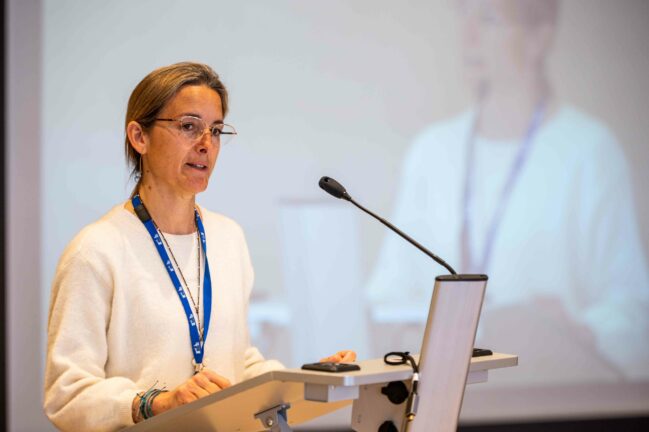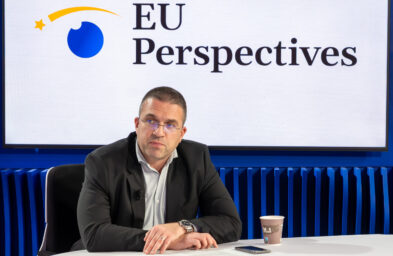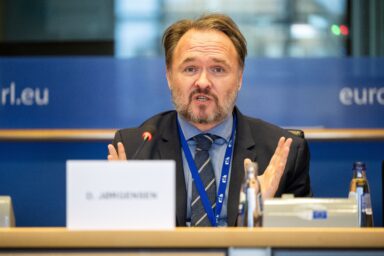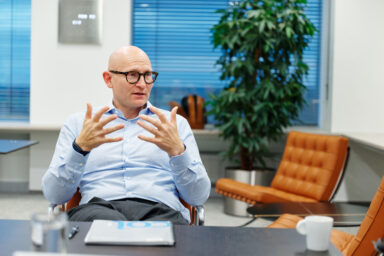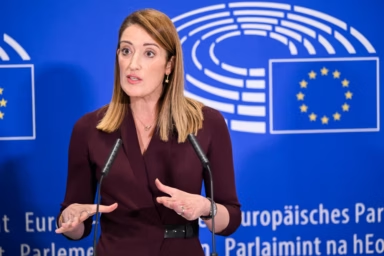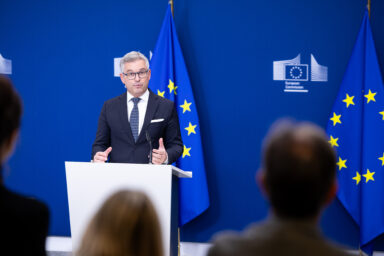Pre-commercial procurement should be used as a strategic tool to accelerate health research and development, and strengthen Europe’s competitiveness. EU will push soon for environmentally sustainable, climate-neutral and circular health and care systems.
As the European Commission prepares the next Multiannual Financial Framework (2028–2034), it plans to put public procurement at the heart of its strategy, especially in health.
The goal: shift from simply funding innovation to actively buying it, using procurement as a strategic tool to accelerate health R&D, support green transitions, and strengthen Europe’s global competitiveness.
Public procurement: from undervalued to unlocked
At a recent life sciences policy event ‘Advancing Europe’s Leadership in Life Science’ hosted by the European Committee of the Regions, Carmen Laplaza Santos, Head of Unit for Health Innovation at the European Commission’s Directorate-General for Research and Innovation, delivered a clear message: Europe is underutilising public procurement as a strategic funding tool, and that’s about to change.
While the European Union continues to invest in research and development, it has not yet embraced its potential role as an active buyer of innovation.
You might be interested
“When it comes to funding, public procurement remains largely unused in Europe,” Santos said.
When it comes to funding, public procurement remains largely unused in Europe. – Carmen Laplaza Santos, Head of Unit for Health Innovation at the European Commission’s Directorate-General for Research and Innovation
“We use public funds to invest in research and development, but we underinvest on pushing the public sector as an investor for their own needs, as a procurer of research and development.”
Strategic backing from Draghi and Letta
That, she added, is expected to change significantly in the next budget cycle. “This is something that is going to be also fostered very much in the next financial framework. Draghi, Letta, all have worked for that.”
Her reference underscores how the upcoming financial framework draws on broader European reform proposals. In 2024, Mario Draghi called for joint procurement strategies and innovation-friendly public funding rules as part of an 800 billion euro investment plan to close the gap with global competitors.
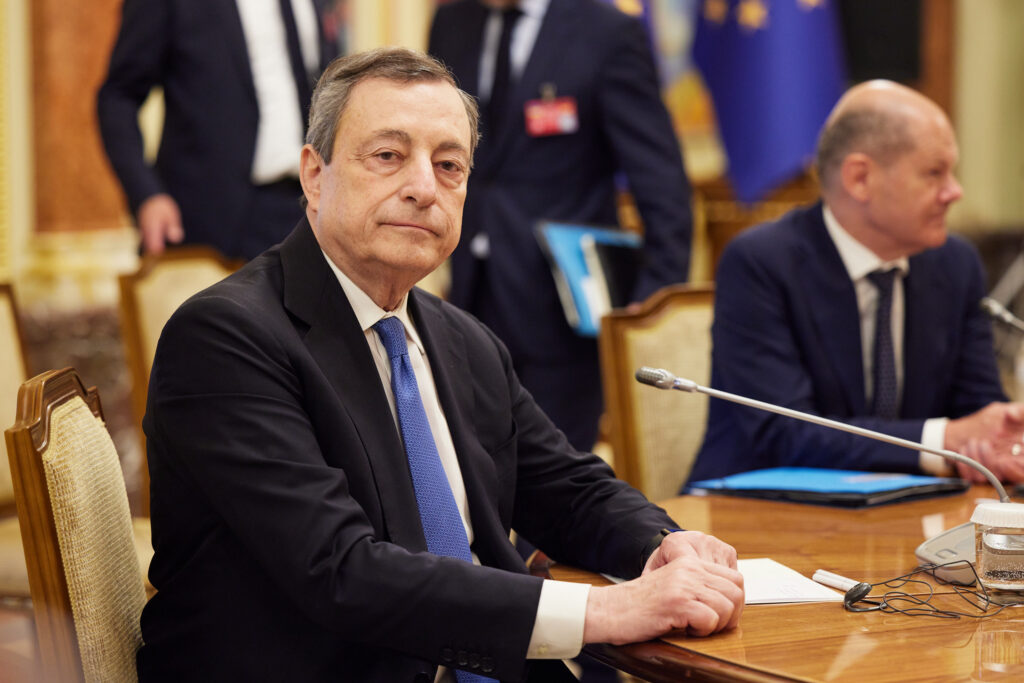
Enrico Letta, report on the Single Market, proposed the creation of a “fifth freedom” to improve the free movement of research and innovation. This would include more coordinated funding and streamlined public procurement across European countries.
Traditional public funding models often support individual research proposals, with limited focus on public-sector needs. Pre-commercial procurement (PCP), by contrast, allows public authorities to identify unmet needs and then fund research and development that addresses those gaps.
These procurements typically unfold in three stages: a feasibility study, prototype development, and testing in real-world environments. They stop just short of commercial rollout.
Early evidence of success
Laplaza Santos highlighted the strong track record of these approaches.
“We have explored in our research and innovation framework programmes the use of pre-commercial procurement, and I must say that it’s impressive the results that come out of that. All the small companies that participate […] already those that participate in phase two, most of them commercialise their solutions.”
She pointed to specific successes. “We have used it for next-generation sequencing. We have used it for integrated care. It’s a fantastic instrument.”
Projects such as OncNGS and INSTAND-NGS4P are advancing cancer diagnostics using next-generation sequencing. Meanwhile, initiatives like ROSIA and the 2CARE4 cluster are helping hospitals and health systems develop digital platforms for integrated care.
Demand meets development
Santos attributed these successes to the close interaction between the public sector and technology developers.
“Because of this important competitive advantage that gives you the fact of being in this continuous interaction between the demand and supply, for a company to know what are the needs,” she said.
This early access to user feedback improves the relevance of solutions and increases their chances of commercial success.
Vaccines show the way
A large-scale example is already underway. The European Health Emergency Preparedness and Response Authority has launched a 200 million euro procurement process to support new vaccine development. “We see, for example, how HERA has launched the announcement of more than 200 million of pre-commercial procurement for new vaccines. And I think this is something that we have to use more.”
Santos also noted the disparity with other global regions. “We use it five times less than the United States has done.”
Scaling up in the next budget cycle
The Multiannual Financial Framework, expected to be presented on 16 July, is likely to make pre-commercial procurement a much more central tool. According to Santos, it will play a larger role not only in health but also in defence and digital innovation.
We use pre-commercial procurement five times less than the United States. – Carmen Laplaza Santos, Head of Unit for Health Innovation at the European Commission’s Directorate-General for Research and Innovation
“I invite you to also monitor the opportunities,” she said. “There are some countries in Europe that are using a lot of innovation procurement. The country I know well, Spain, is really, at a regional level, using it a lot.”
She reminded the audience that all suppliers based in the European Union are eligible to compete, provided that the research is conducted within Europe.
A green PCP push in healthcare
The European Commission confirmed that three new procurement projects will launch soon under Horizon Europe’s health cluster. These calls fall under the topic “Pre-commercial procurement for environmentally sustainable, climate-neutral and circular health and care systems.”
We need to move. We need to do this now. If we are not able to transform our health systems, we are going to be in trouble. I don’t want to hear again ‘we’ll do it in five years’, in five years it will be too late. – Sandra Gallina, Director-General for Health and Food Safety
The health sector produces 4 to 5 percent of global carbon emissions. Waste from pharmaceuticals, single-use plastics, and diagnostic chemicals remains high. Meanwhile, the transition to environmentally sustainable healthcare has been slow.
Greener innovation, lower footprints
These new projects aim to help procurers jointly fund innovations that reduce waste, lower supply chain emissions, and promote circular resource use. The calls will also require that end users, such as clinical teams and patients, be actively involved in defining needs and evaluating prototypes.
The European Commission confirmed that the 2026–2027 work programme under Horizon Europe is likely to include more such opportunities in healthcare and beyond.
Political urgency from DG SANTE
While Sandra Gallina, Director-General for Health and Food Safety, did not address pre-commercial procurement in her remarks, she underscored the broader urgency of reforming Europe’s health systems, the very systems that PCP initiatives aim to support.
“We need to move. We need to do this now. If we are not able to transform our health systems, we are going to be in trouble. I don’t want to hear again ‘we’ll do it in five years’, in five years it will be too late,” said Gallina.
La Plaza Santos added: “What we want is for the life science sector to go beyond what it was, and it was already very good, and become truly world-leading.”
